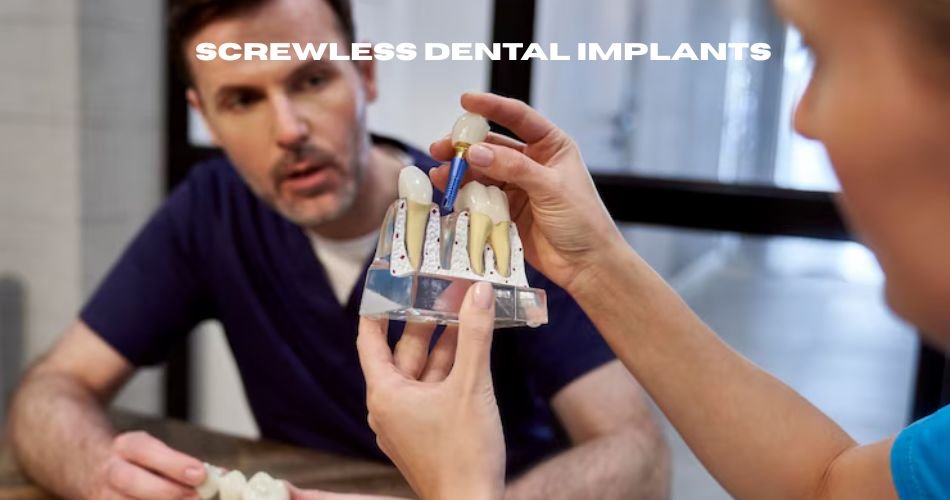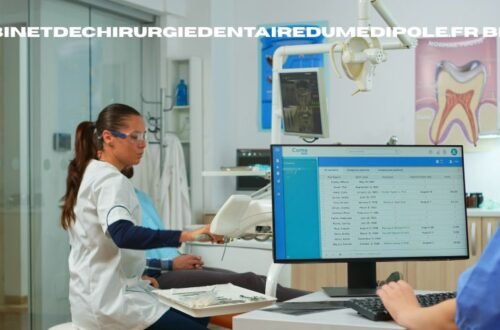Screwless dental implants represent a significant advancement in the field of restorative dentistry. Traditional implants are often affixed using visible or hidden screws, which secure the dental prosthetic to the implant post. However, screwless systems rely on precision-fit mechanisms or adhesive techniques, which eliminate the need for screws entirely. This new system not only improves the esthetic outcomes but also simplifies the prosthetic workflow and enhances patient comfort. As dental technology evolves, screwless implants are gaining recognition for their streamlined design and impressive functionality.
The Evolution from Screw-Retained to Screwless Solutions
In the past, screw-retained dental implants were the norm due to their reversibility and secure attachment. However, these systems were not without complications. Issues such as screw loosening, breakage, and aesthetic limitations due to access holes prompted the dental community to seek alternatives. Screwless dental implants emerged as a revolutionary concept designed to eliminate these mechanical problems. By using friction-fit, press-fit, or adhesive methods to secure the prosthetic, they offer a seamless look and reduce the risk of mechanical failure.
How Screwless Dental Implants Work
Unlike their screw-retained counterparts, Screwless dental implants employ unique attachment methods. One popular technique involves a tapered internal connection, where the abutment and crown fit snugly into the implant through friction or compression. Some systems also use advanced dental adhesives that chemically bond the components without the need for mechanical fastening. This integration ensures durability while offering a high degree of esthetic appeal. Patients can chew, speak, and smile naturally, without worrying about visible metal components or the discomfort associated with screw access points.
Aesthetic Benefits of Screwless Implants
One of the most appreciated features of screwless dental implants is their superior aesthetic outcome. Since there are no screw access holes, the restoration appears more natural, especially in the front teeth where appearance is critical. The absence of metal hardware at the gumline allows for better light transmission through the crown, mimicking the translucency of natural teeth. Patients who opt for screwless implants often find themselves more confident in their smiles, knowing that their dental work is virtually indistinguishable from real teeth.
Improved Comfort and Functionality
Screwless dental implants are designed with patient comfort in mind. Because they don’t require screws, there’s no risk of screw-related irritation or damage to surrounding tissues. Additionally, the snug fit of the implant components helps to evenly distribute bite forces, enhancing stability and reducing wear. This contributes to a more comfortable chewing experience and a lower likelihood of post-operative complications. Patients also report less soreness and a faster healing period with screwless systems compared to traditional implants.
Simplifying the Restorative Process for Dentists
From a clinical perspective, screwless dental implants simplify the restorative process. Without the need for precision screw placement or torque calibration, dentists can focus on achieving optimal fit and esthetics. The reduced number of components also decreases chair time and lowers the risk of mechanical complications. This makes screwless implants a practical choice for both single-tooth restorations and full-arch rehabilitations. The ease of placement and adjustment is particularly beneficial in complex cases where time and accuracy are paramount.
Exceptional Durability of Screwless Dental Implants
Despite their minimalist design, screwless dental implants are built to last. Their innovative connection mechanisms are engineered to withstand the forces of daily chewing and grinding. The materials used—often high-quality titanium or zirconia—are biocompatible and resistant to corrosion. With proper care and regular dental checkups, screwless implants can last as long as traditional screw-retained implants, if not longer. Patients who prioritize both function and aesthetics often find screwless options to be a worthwhile long-term investment in their oral health.
Ideal Candidates for Screwless Implants
Not everyone may qualify for screwless dental implants, but they are a viable option for many. Ideal candidates are those with sufficient bone density in the jaw to support the implant and who maintain good oral hygiene. Individuals who are non-smokers or willing to quit smoking during the healing process also see better outcomes. Additionally, patients with high esthetic demands or a history of complications with screw-retained implants may benefit the most from switching to a screwless design. A thorough evaluation by an implant specialist can help determine suitability.
Comparing Screwless and Cemented Implants
Although screwless and cemented implants may appear similar, they differ in execution. Cemented implants use a dental cement to bond the crown to the abutment, while screwless implants often rely on precise mechanical retention or adhesive locking systems. Cement can occasionally lead to excess material being trapped at the gumline, causing inflammation or infection. Screwless designs, on the other hand, are typically cleaner and more tissue-friendly. This makes them a preferred choice for patients prone to peri-implantitis or other gum-related issues.
Maintenance and Oral Hygiene
Maintaining screwless dental implants is relatively straightforward. Because there are no screws to become loose or trap food particles, patients often experience fewer hygiene challenges. Regular brushing, flossing, and the use of an antimicrobial mouthwash are sufficient to keep the area clean. Routine dental visits ensure that the implant and surrounding tissue remain healthy. Dentists may also use special tools to monitor implant stability and check for signs of wear, ensuring longevity and optimal performance.
Cost Considerations and Insurance Coverage
Screwless dental implants can be slightly more expensive upfront due to their advanced design and materials. However, they often require fewer follow-up appointments and result in fewer complications, which can lower long-term costs. Many dental insurance plans now recognize the value of implant-based restorations and may partially cover the procedure. Patients are encouraged to consult with their insurance providers and dental offices for payment plans or financing options that make screwless implants more accessible.
Technological Innovations in Screwless Implant Systems
Advancements in dental technology continue to improve screwless implant systems. Computer-aided design and manufacturing (CAD/CAM) allows for custom-fitted components that match the patient’s unique anatomy. Digital impressions and 3D printing streamline the treatment process, enhancing precision and comfort. Some screwless implants are also designed to be retrievable using specialized tools, offering the benefits of a screw-retained system with the aesthetics of a cemented one. As these technologies evolve, the future of screwless implants looks increasingly promising.
Potential Risks and How to Minimize Them
While screwless dental implants are generally safe, they are not entirely without risk. Poorly fitted components or inadequate adhesive bonding may lead to crown dislodgment or movement. Infections, though rare, can occur if hygiene is neglected. These risks can be minimized by choosing a qualified implant specialist and following post-operative care instructions diligently. Regular dental checkups will ensure any issues are detected early and resolved before they escalate into more serious problems.
Patient Testimonials and Real-Life Results
Many patients who’ve opted for screwless dental implants report high levels of satisfaction. Testimonials often highlight the natural appearance and improved comfort compared to their previous dental work. People also appreciate the shorter recovery time and reduced number of follow-up visits. Whether for a single missing tooth or full-mouth reconstruction, screwless implants have helped many reclaim their smiles and confidence. Their positive experiences serve as a testament to the effectiveness of this cutting-edge solution.
Why Screwless Implants Are the Future of Dentistry
Screwless dental implants represent the future of oral rehabilitation. With their sleek design, superior aesthetics, and reduced mechanical complications, they align with the evolving needs of modern dental patients. Dentists and researchers alike continue to innovate and improve these systems, making them more accessible and effective. As awareness grows and technology advances, it’s likely that screwless implants will become the gold standard in implant dentistry.
Conclusion
Screwless dental implants have revolutionized the field of implantology with their blend of aesthetics, comfort, and functionality. By eliminating traditional screws, they simplify procedures, reduce complications, and enhance the visual appeal of restorations. Whether you’re seeking a solution for a single tooth or a full smile makeover, screwless implants offer a durable, attractive alternative that can transform both your appearance and confidence. As dental technologies continue to evolve, embracing this innovation might just be the smartest move for your oral health.






